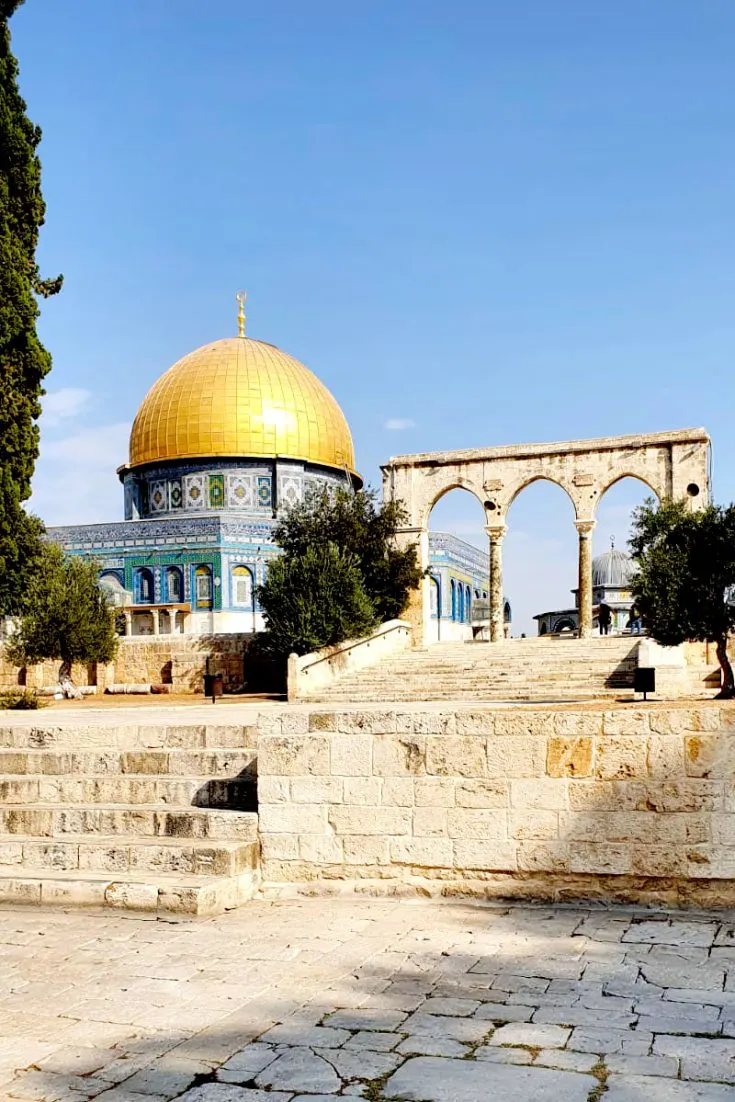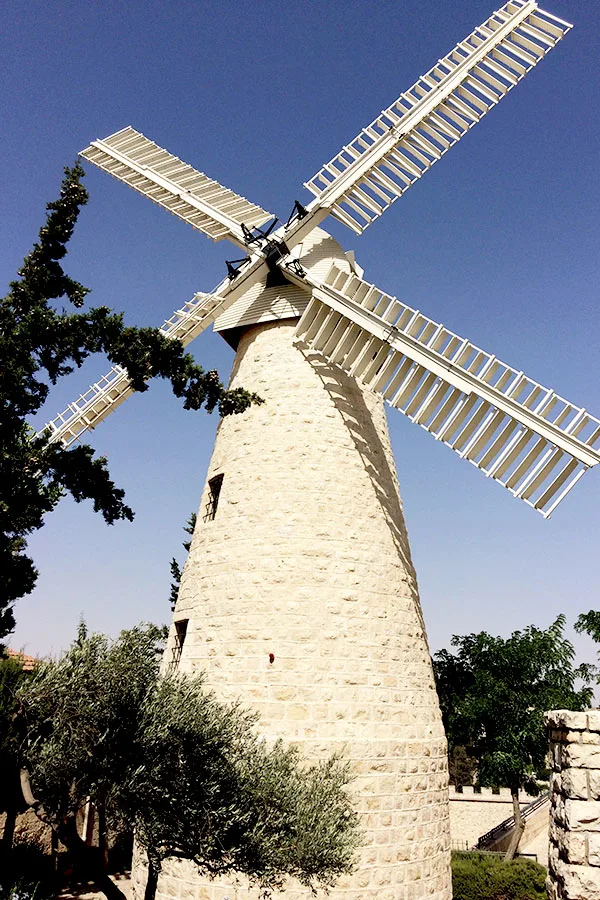While Jerusalem is the largest city in Israel and there is always a lot to see and do, this itinerary will help you see the most with just 24 hours in Jerusalem!
Make sure to dress modestly because you will start out with holy sites. Also, wear comfortable walking shoes because best way to experience Jerusalem is to walk everywhere.
If you want to get in as much as possible, I highly recommend starting your day early and being one of the first groups to go up to the Temple Mount.
Morning
After breakfast start your day off in the Old City where most of Jerusalem's rich history is located.
The Temple Mount
The Temple Mount refers to the elevated plaza above the Western Wall that was the site of both the First and Second Jewish Temples. It is and always has been the holiest site in the world to Jews.
in the 7th century Muslims began viewing Jerusalem and the Temple Mount as a holy site. Today it is considered the third holiest sites to Muslims, after Mecca and Madina.
At the end of that century the shrine known as the Dome of the Rock was built on the Jewish holy site shortly and Al Aqsa mosque was as well shortly there after.
Non-Muslims are permitted to visit the plaza during set days hours. However they are not allowed to enter the Dome of the Rock.
Western Wall (Kotel)
The Western Wall or the Kotel, is the last remaining wall of the Second Temple. It is revered as a holy site because it is the closest to the Temple Mount Jews are legally allowed to pray.
In addition to Jews, many Christian tourists also come pray at at the wall.
Prayers there include regular Jewish prayers that are said three times a day, saying Psalms, and personal heartfelt prayers.
It is also tradition to leave a note asking G-d for things. These can be anything your heart desires, big or small.
The Jerusalem Archaeological Park
The Jerusalem Archaeological Park and Davidson Center are located nearby the Western Wall in the Old City.
The park contains artifacts from different periods: the First and Second Temple periods, the Byzantine period, Muslim period, the ancient Crusades period, as well as others.
The most exciting findings are: the walls of the city from the First Temple period, the steps leading up to the Temple, the original street from the time of the Second Temple period, shops, ritual baths, and more.
However, you can also walk the streets and climb the stairs pilgrims to the Temple Mount did 2,000 years ago.
The Davidson Center is a museum within the archaeological park, with presentations and exhibitions related to findings from the site.
In addition, a virtual model with local guidance will take you back in time to the days of the Second Temple.
With it, you can and walk with pilgrims on the street, buy a sacrifice, immerse yourself in the mikveh, and ascend to Temple Mount.
Western Wall Tunnels
The Western Wall Tunnels offer a tours that follow tunnels under ground, between the houses of the Jewish Quarter and the Western Wall Plaza, and extends to the end of the wall under the Muslim Quarter.
The site contains unique archaeological findings from many periods of Jerusalem’s 3,000 years of existence.
This includes evidence of Jewish settlement and government from the First Temple, 2,700 years ago.
This guided tour will bring your through archaeological sites, give historical information and context of discoveries found there.
The Herodian Quarter
The Herodian Quarter is a museum that exists under the Jewish Quarter. Here you can see ancient houses, ritual baths, and housewares which belonged to priests who worked in the Temple.
Jewish Quarter Defender's Memorial
Jewish Quarter Defender’s Memorial features rare images which capture the last days before the fall of the Jewish Quarter in 1948.
It also has short video where residents and fighters recall their experiences from those dramatic moments.
Thirty-nine fighters and thirty residents of the Jewish Quarter fell in the War of Independence.
Forty eight of them were buried in a mass grave where the Gal-Ed memorial monument now marks, Batei Machseh Square.
Afternoon
Leave through Jaffa Gate and walk down Jaffa road. This is a good time to get lunch at a cafe, street food, or at the at Mahane Yehudah Market.
Mahane Yehuda Market
Mahane Yehuda Market more often referred to as “The Shuk” is a favorite of locals and tourists alike.
The main street is lined with stands selling fruits, vegetables, and nuts with clothing and gift shops sprinkled in between.
However, if you go down the opens in the main path you'll find a whole other world with restaurants, cafe's, bakeries, jewelry shops, and so much more!
Enjoy and take your time exploring!
Museum of Underground Prisoners
A short walk from the Old City is the Museum of Underground Prisoners which is located in the central prison during the British Mandate.
Alongside criminals, hundreds of underground warriors were imprisoned: Haganah, Etzel, and Lehi.
These were people who had been captured by the British on various actions, while fighting against foreign rule.
Guided museum tours explore the prison cells, an introduction to the story of the underground prisoners and the story of their struggle for the benefit of the Jewish population of the Land of Israel during the British Mandate.
The Tower of David
The City of David is the most ancient part of Jerusalem and is only a short walk from the Western Wall.
It was created by King David began over 3,000 years ago.
Today, this ancient city is a national park and the most important archaeological site in Israel. It has some of the most exciting archaeological finds of the ancient world.
The main area that has been arranged for visitors is on the south side of the Old City near the Dung Gate.
Montefiore's Windmill
Montefiore’s Windmill was one of the first Jerusalem landmarks to be built outside the Old City walls.
It was built in 1857 by Sir Moses Montefiore where he would later build Mishkenot Sha’ananim which became first neighborhood in Jerusalem outside Old City.
Today, the windmill houses the Jerusalem Vineyard Wineries Visitor Center.
Near by in a glassed-in room is a replica Montefiore’s carriage which he used in his travels.
The First Station Jerusalem
Today, First Station – known in Hebrew as HaTachana HaRishona – was once a busy railway station filled with hustle and bustle.
Today it’s a chic lively place filled with restaurants, shops, and events locals love.
Explore the station and follow the train tracks.

